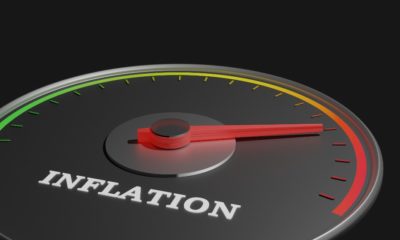Economy
Average Income in US Was Highest in 2019

The highest average income in US levels in 2019 before coronavirus changed everything. According to a 2019 government survey released by the US Census Bureau yesterday, U.S. average household income was at its highest levels in 2019, while poverty levels fell. Assistant division chief Trudi Renwick of the U.S. Census Bureau noted the increase in income. He said, “We do see in the data that we have an increase in employment, that we have an increase in earnings, and those would all tend to push median household income up.” Adjusted for inflation, this means that US 2019 average incomes are the highest since 1967.
RELATED: Biden Talks Labor, but Assures Wall Street of Status Quo
Median Household Income by Year
Data from the U.S. Census Bureau, real median household income jumped 6.8% from $64,324 in 2018 to $68,703 last year. This is the highest median income recorded since 1967, the year when the agency started recording data. The poverty rate went down to 10.5%, a drop of 1.3 percentage points from the year before. More important, it was the fifth consecutive annual decline in poverty rates. It also stands as the lowest rate recorded since 1959, when the agency started tracking.
David Deull, principal economist at IHS Markit said “It was a pretty banner year for households, and really across the income distribution, we got a lot of eye-popping figures in this release.” He described 2019 as the “late-stage expansion high watermark benchmark.”
The report also has its concerns. The number of people without health insurance also hit increased levels. The agency also said that uninsured Americans rose 0.3 percentage points to 9.2%. From 28.6 million, those without insurance rose to 29.6 million, including more children.
The data helped show the employment picture. More people availed employer-provided coverage in 2019 compared to 2018. This meant growth in employment rates, as Medicaid coverage shrunk as well. Private healthcare covered 67.4% of people, while Medicare and Medicaid covered 35.4%.
The Boom in the Last Five Years
The data may seem outdated right now, especially with the damage caused by Covid-19. Still, it helped establish benchmarks on income, poverty, and health coverage before Covid-19. Before the pandemic, the US enjoyed a five-year economic boom. Without coronavirus, the gains could have carried over to 2020 and beyond.
Coronavirus in particularly affected jobs. In 2019, the jobless rate was at 3.7%. When the impact of the virus hit the US, stores, and businesses had to shut down, along with it 22 million jobs. By April 2020, the height of the pandemic, the jobless rate zoomed to 14.7%. Recently, the job market has opened, albeit slow, and is at 8.4%.
At present, US recovery is slow. Covid-19 infection numbers remain high, so businesses are hesitant to reopen in full. With 6,788,147 infected cases and over 200,000 deaths, declaring that the outbreak is under control is a long way off. A vocal minority also continues resisting safety measures such as masks. This is why the country has one of the highest infection rates worldwide.
Unless a vaccine gets approved later this year, the economy may take longer to recover in full. Mere updates on vaccine trials already excite the stock market. News about possible vaccine approvals pushes industries to prepare for normalized operations. Stock prices on pharma, leisure, travel, and entertainment then go higher.
U.S. Income Statistics
For now, census officials will assess the pandemic’s impact on the 2019 data. This early, they are beginning to that 2019 is the high point for the U.S. economy.
“It is also sobering that this is likely one of the best reports we will see at least for a long time,” H. Luke Shaefer, director of the University of Michigan’s Poverty Solutions center said. He added, “No one yet knows the full impact of the economic and public health crisis that is consuming our lives today and disproportionately impacting the poorest American families.”
Watch this Introduction to Income and Poverty in the United States:
Based on the 2019 census report, it seemed America was in the midst of a boom period. Do you agree that without Covid-19, the United States was enjoying a period of prosperity? What does that imply to the current administration and the market conditions in 2019? Let us know what you think by commenting below.















